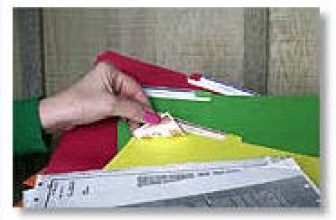
RFID appeared to protect Pharaoh’s treasure
[ad_1]

Recently, the International Art Exhibition has adopted RFID technology to protect the treasures of the Tutankhamun pharaoh’s tomb. These precious cultural relics have recently been exhibited around the world. This RFID system is provided by British RFID technology company ISIS. The exhibition with the theme of “Golden King and Great Pharaoh” has RFID as a personal bodyguard, and safety is more guaranteed. The museum in Indianapolis is currently deploying an RFID system. Once the showcase of the exhibition is arbitrarily touched, the CCTV (closed-circuit television monitoring system) provided by the Bosch security system instantly broadcasts the museum’s live broadcast in the security room. The museum staff receives the alarm from the pager and sounds in the exhibition hall. The alarm informs the person that the system has been triggered.
Since 1996, ISIS has provided RFID tracking systems for enterprises and government departments. Until 2000, began to provide RFID systems for museums, galleries and private collectors to track valuable artworks and cultural relics. For 9 years, the company has used Wavetrend’s 433 MHz active RFID tags to mark valuable cultural relics. The tag has a built-in vibration sensor and magnet converter to determine whether the artwork is touched or moved, and to detect whether the showcase is opened. The system has been deployed to the National Gallery in London, the Museum of Modern Art in New York, and the Islamic Art Museum in Doha, Qatar.
When the International Art Exhibition (headquartered in Aurora, Ohio) planned to hold the second Tut Pharaoh exhibition for the Egyptian government, ISIS was invited to discuss an RFID security system for tracking 130 Egyptian treasures and 75 display cases. There are more than 50 treasures in Tutankhamun’s tomb, more than 70 cultural relics left by other pharaohs and nobles, and some of the latest scientific research on Tut Pharaoh. According to Jeffrey Wyatt, vice president and project manager of the exhibition, the exhibition started in Vienna, Austria, and then went to Atlanta in the United States. The five-year exhibition will involve museums and art galleries in 7 to 8 cities, all of which require RFID protection. At present, the exhibition has reached the third stop-Indianapolis, and the RFID system has been installed in the Children’s Museum in Indianapolis.
Wyatt said that the RFID tracking system was used for the first time in an international art exhibition. Compared with traditional wired sensor systems, RFID technology has two advantages: First, it is widely used and can be used in many countries and regions. The second is that RFID technology can not only effectively track when there is a problem, but also track the data of the exhibition location and the exhibition situation at any time. In this way, the information of the exhibition is in hand, and the safety measures are in place, saving time and effort.
Rob Green, managing director of ISIS, said that the company also needed video monitors for integration at the time. As a result, the international art exhibition adopted a set of Bosch’s CCTV security system, which included nearly 40 cameras and software to transform the data returned by the cameras. If something happens, such as the showcase is opened, ISIS’s Aspects software will detect it, and then issue an instruction to activate the relevant Bosch camera for video tracking. The software is installed on ISIS computers and also on computers in the museum’s security room. The former stores the data of the RFID reader, while the latter stores the video of the camera.
Wyatt said that the connection can be completed before the exhibition starts. Up to 10 RFID readers are installed on the ceiling and walls to receive data from the RFID tags on each showcase. The unique ID code of the tag corresponds to the ID number of the showcase, the location of the showcase, and the items in the showcase.
According to Green, the 433 MHz tag is the size of a domino and contains a 3-volt lithium battery with an average lifespan of six years. In a free space, the reading distance is 100 meters, but indoors, only signals within 30 meters can be read.
The RFID reader can detect the signal sent by the tag, and then transmit the data through the Ethernet connected to the ISIS server, and then use the Aspects software to convert and store the data.
The “emergency alarm” function of the Aspects system provides a window that will not be closed when an alarm is issued. It flashes and responds to information, graphics, and instructions about the alarm. The CCTV camera closest to the tag monitors the movement of the RFID tag. If the tag does not produce the expected response, the “Label Artwork Lost” notice will be displayed on the screen in the security room.
According to Wyatt, RFID security systems are easy to transfer from one museum to another. Although the building structure of different places is different, the size of each place is also different. The Vienna Museum occupies 15,000 square feet, Atlanta’s 25,000 square feet, and Indianapolis’s 12,000 square feet, with one and two floors. However, the installation of the RFID system went smoothly. Only 10 RFID readers are enough to obtain all tag data. Wyatt said that every time a place is changed, the assembly software and alarm settings are re-operated again to make them correspond to the corresponding exhibition hall number and display cabinet number.
Wyatt said that RFID technology makes the whole work pleasant. The collected data and records of each vibration and related background of the vibration sensor can be used to understand any abnormal changes in the ancient cultural relics exhibition, which has high utilization value.
[ad_2]




